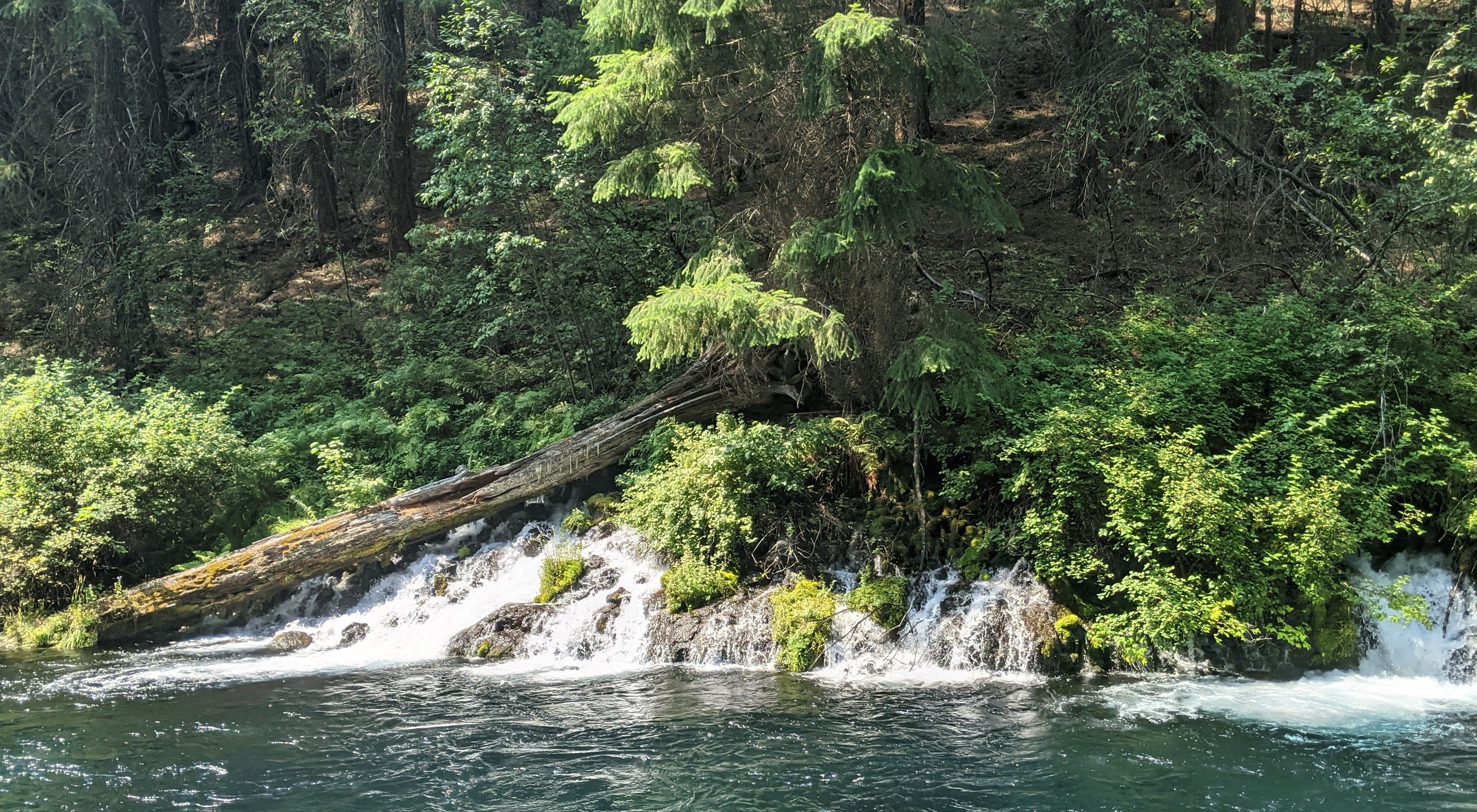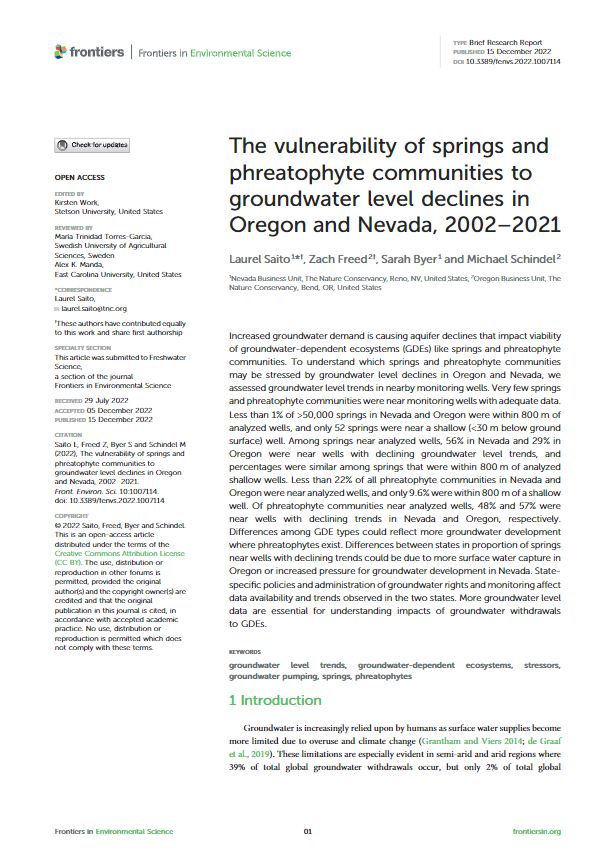Protecting Oregon’s Groundwater to Sustain the State’s Beautiful and Diverse Ecosystems
TNC Oregon is working to protect the state’s most precious resource, water, which contributes to its rich biodiversity, complex habitats, flourishing economy, and sustains healthy communities.
Hidden beneath the surface, Oregon’s groundwater is critical to all aspects of the state’s success and health.
Oregon’s abundant supply of clean, high-quality water is the setting for our most biodiverse and iconic habitats, acts as our primary economic asset, and provides for healthy cultures and communities. However, water is not being managed for long-term sustainability. Surface water resources are fully allocated across the state during the dry season, so water users like agricultural businesses and municipalities are turning to groundwater at an unprecedented rate. Over-allocation of groundwater rights has affected vulnerable, front-line communities throughout the state, leading to drinking water shortages and domestic well failures. Oregon’s ecosystems need groundwater, too: it has more springs than any other state in the country; more than a third of all rivers by length, half of all wetlands, and nearly two-thirds of all lakes rely on groundwater.






















TNC Oregon is striving for sustainable solutions to support its communities.
Groundwater is a finite resource with growing demand and shrinking supply. Oregon’s water management is hindered by limited information and outdated management strategies. TNC-Oregon’s Sustainable Water Strategy seeks to answer the following questions: Is our water being managed sustainably for people and nature? If so, how can we ensure the resiliency of our rivers and aquifers in a changing climate? If not, how can communities transition to a secure water future? Projects within the strategy directly contribute to Oregon’s climate adaptivity and ecological resilience with a focus on water shortages and drought. The Nature Conservancy in Oregon will fill information gaps with innovative science, advocate for water-smart policies, and work with communities to develop and implement basin-scale plans.
Tools
-
Stage-Volume-Area Table for Malheur Lake, Oregon, 2021
This hydrologic tool allows users to understand total lake volume and water elevation for a given lake area in Malheur Lake, Oregon. Access the Stage-Volume-Area Table & Dataset.
Reports
-
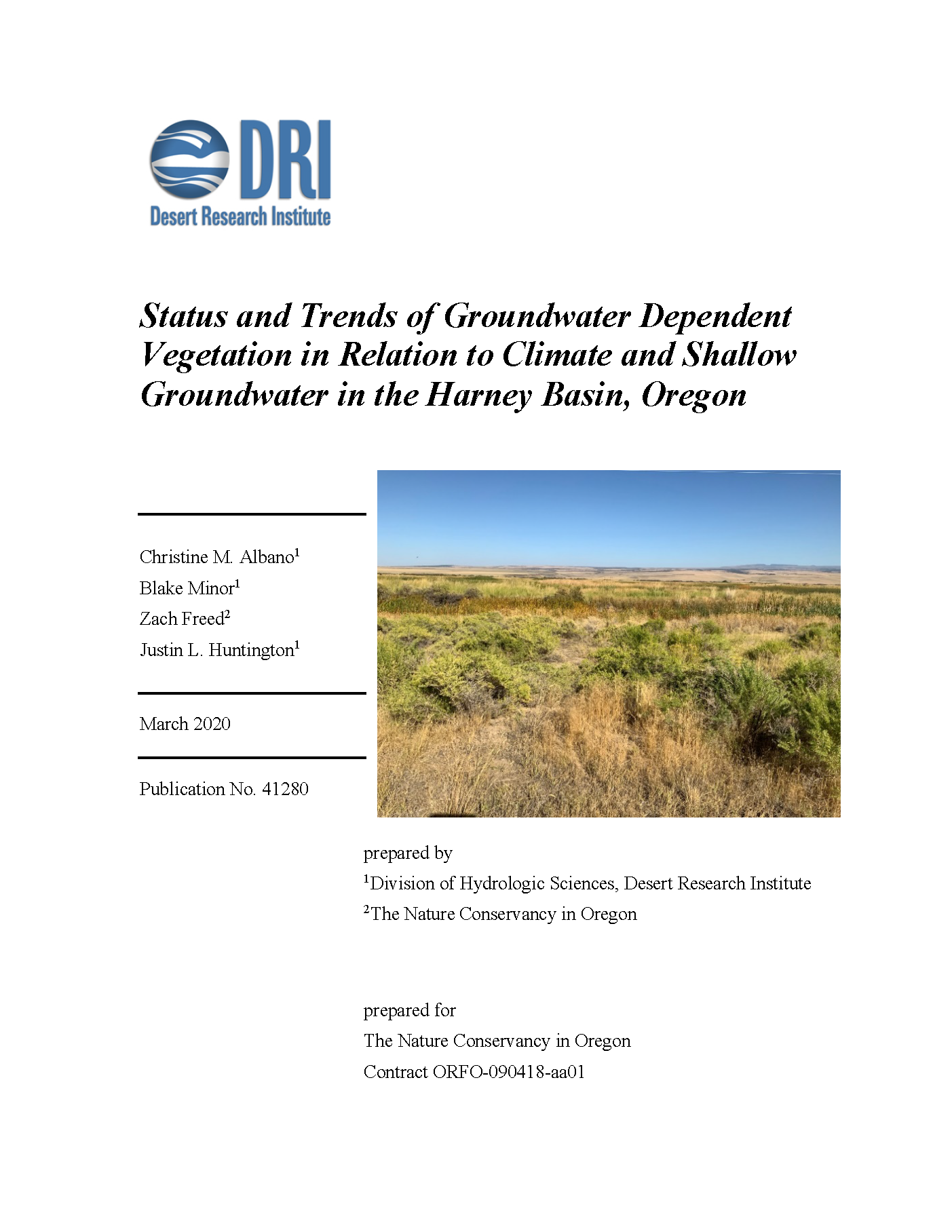
Status & Trends of GDEs
PDF
A report documenting changes in groundwater levels, climate, and phreatophyte NDVI over the past 30+ years.
DOWNLOAD -
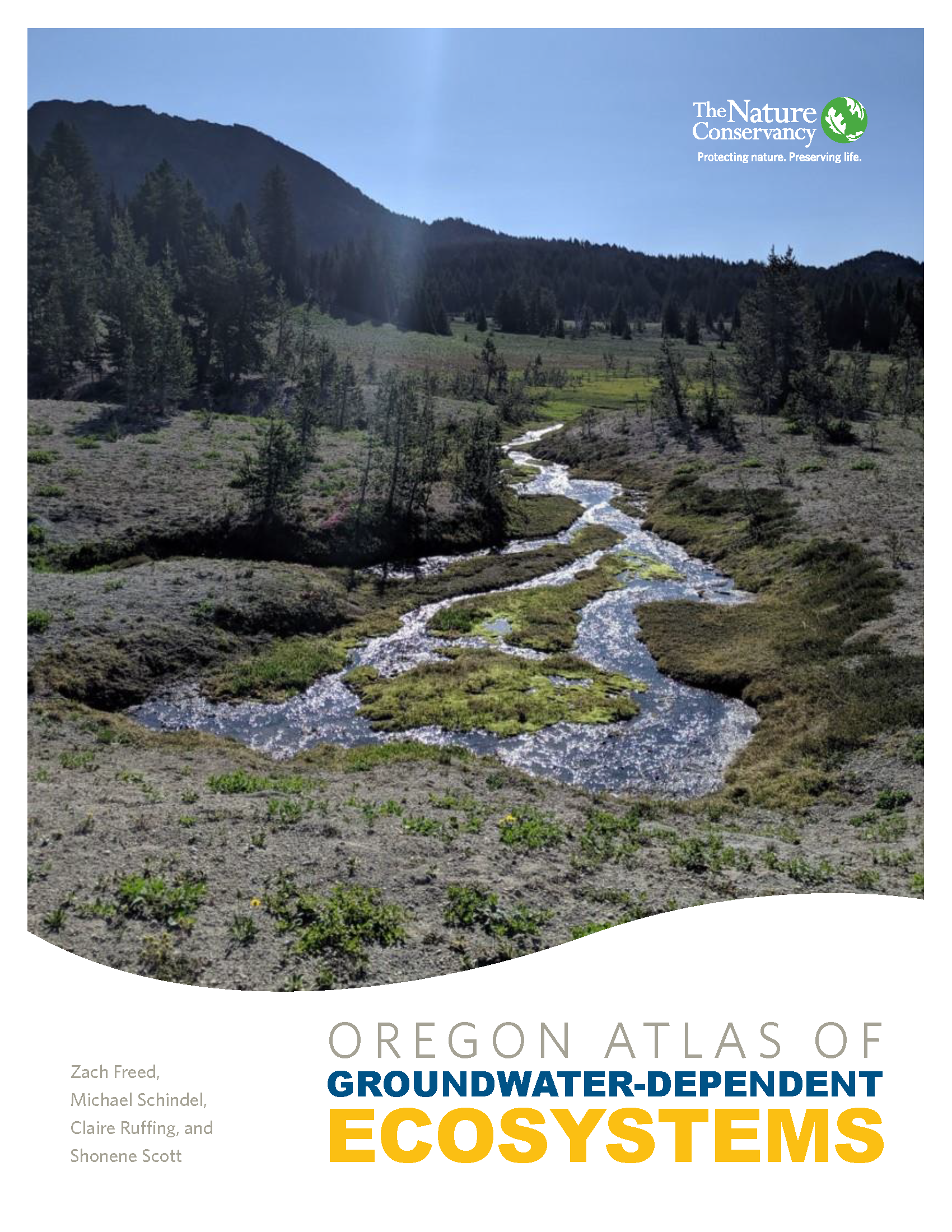
Oregon Atlas of GDEs
PDF
A TNC report that assesses multiple indicators of groundwater-dependence in five types of groundwater-dependent ecosystems across Oregon, as well as stressors and threats to those GDEs.
DOWNLOAD
Literature
-
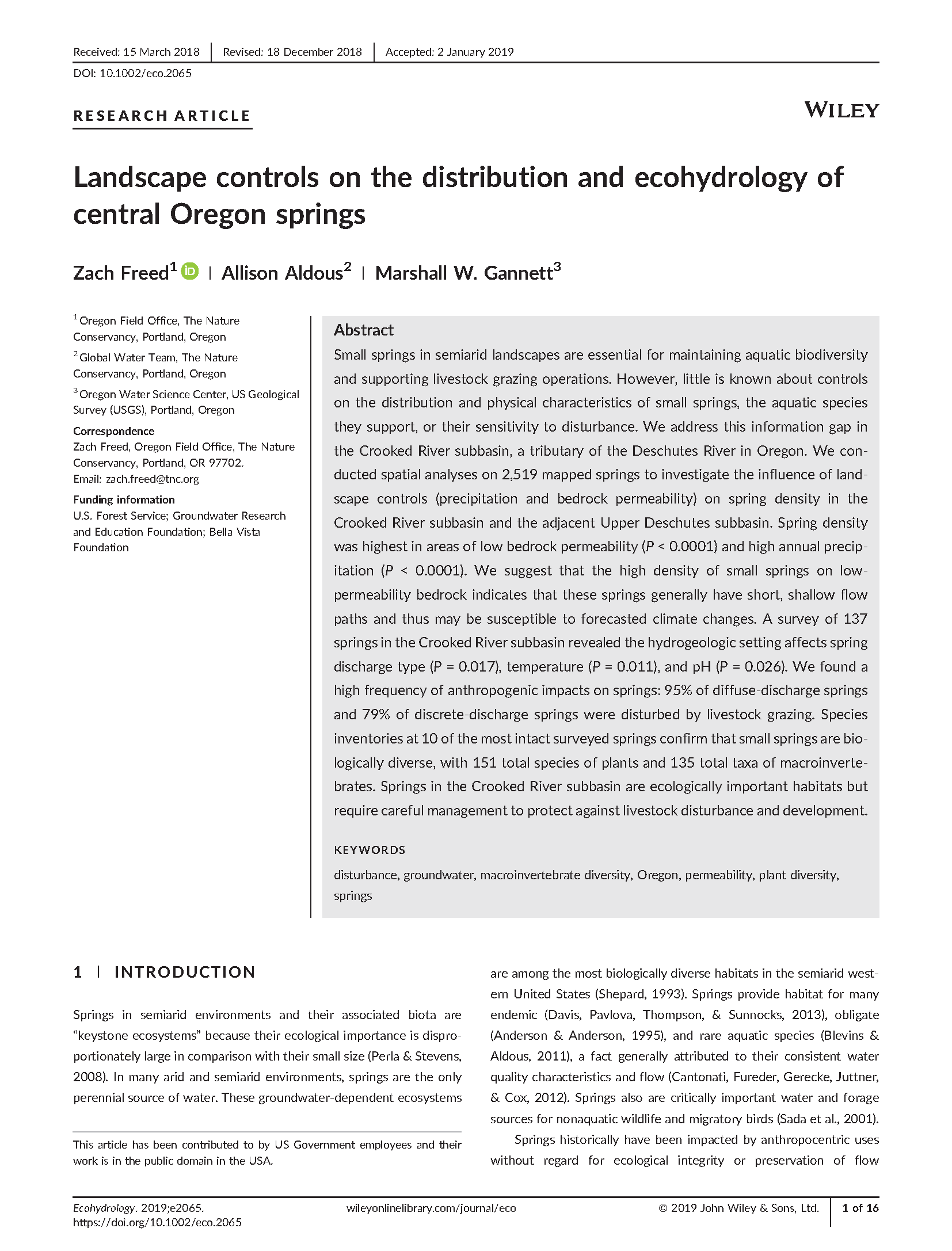
Central Oregon Springs
PDF
An assessment of ecohydrologic characteristics of 2,500 springs in central Oregon, including 137 field-surveyed springs.
DOWNLOAD -
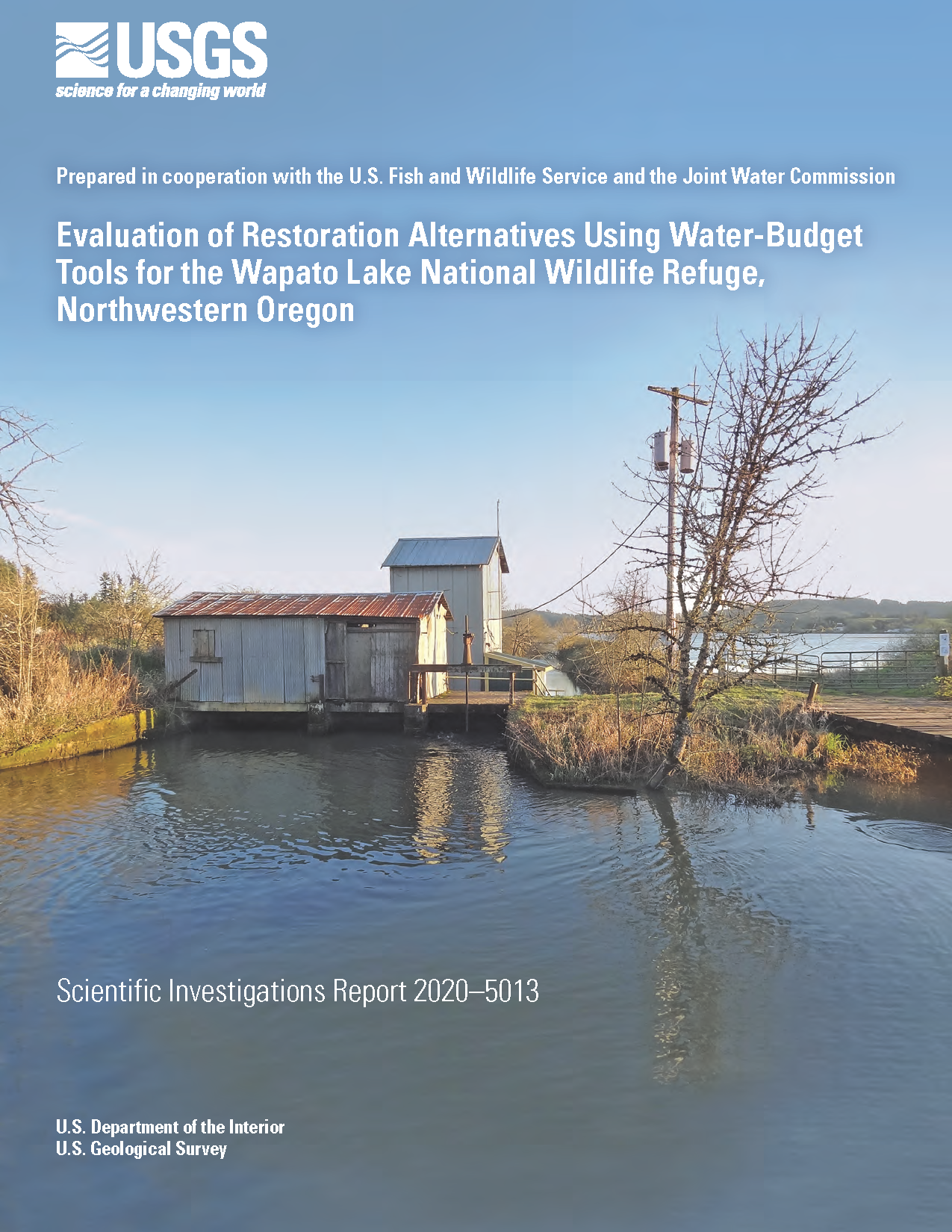
Evaluation of Restoration Alternatives
PDF
This paper describes a water budget tool developed by Freed et al. that was used to assess hydrologic outcomes of different management scenarios in the Wapato Lake, Oregon.
DOWNLOAD -

Oases of the Future?
PDF
A paper creating conceptual framework for different types of potential climate refugia in springs.
DOWNLOAD -
Springs and Phreatophytes
PDF
A collaborative paper describing the vulnerability of springs and phreatophytes to groundwater level declines, and comparing across Oregon and Nevada.
DOWNLOAD
Resources and websites on TNC-Oregon's groundwater and sustainability to come.
If you have questions or comments about anything you see here on the Groundwater Resource Hub, please send an email to gwrhubcontactus@tnc.org, or contact any of our staff listed below.
To connect with TNC Oregon, please reach out to:
Zach Freed
Sustainable Water Strategy Director
zach.freed@tnc.org
Claire Ruffing
Water Scientist
claire.ruffing@tnc.org
